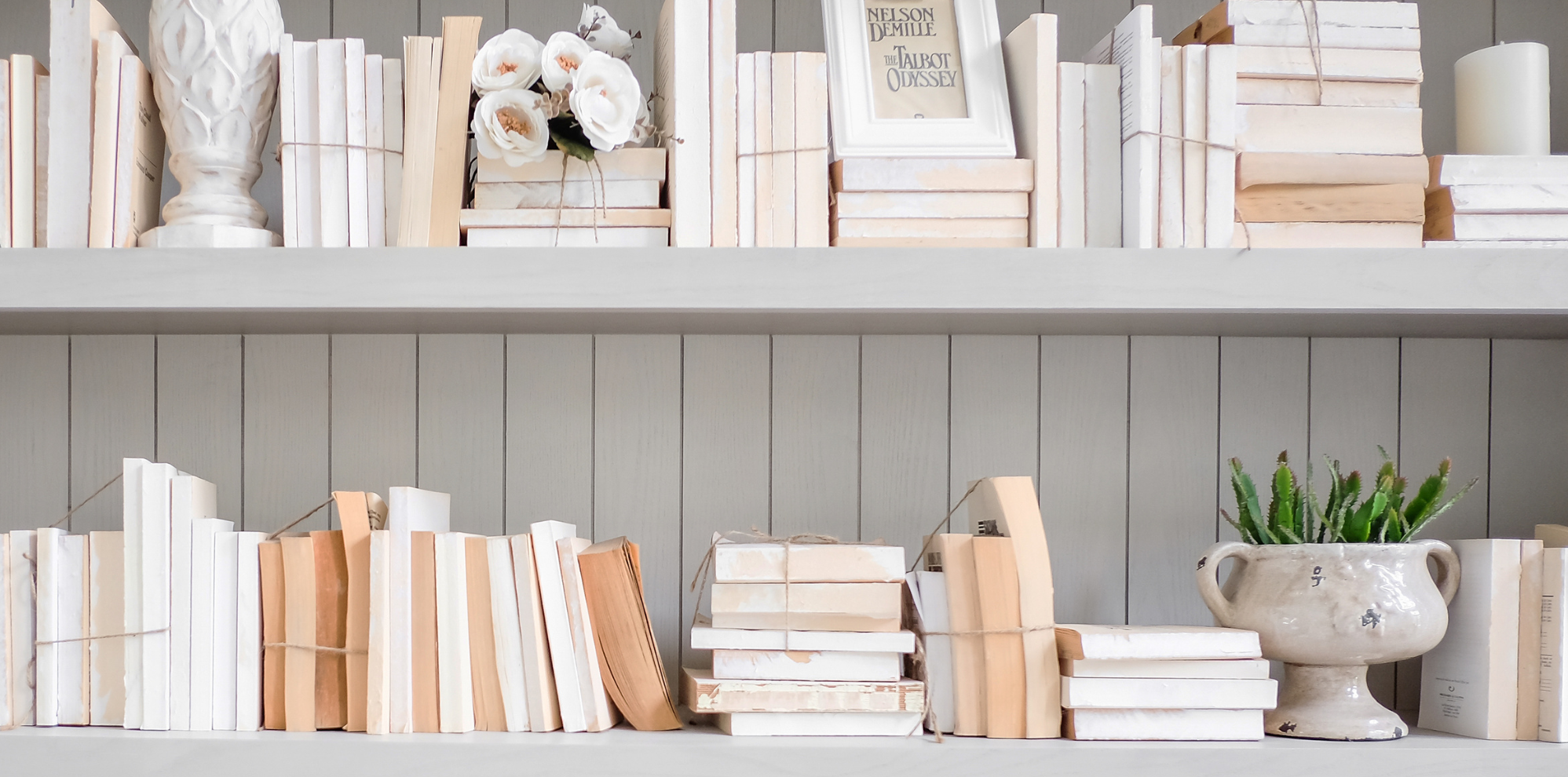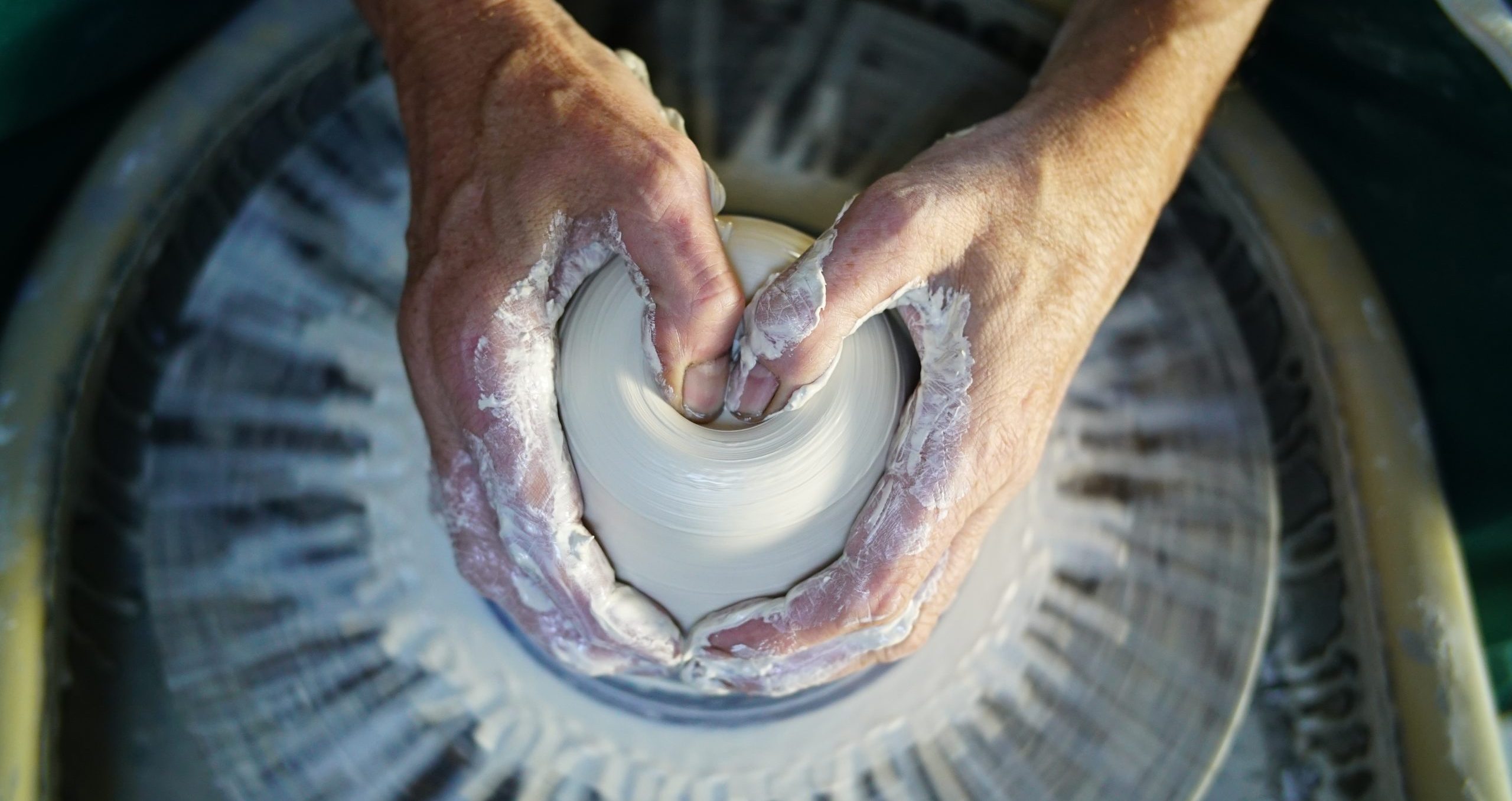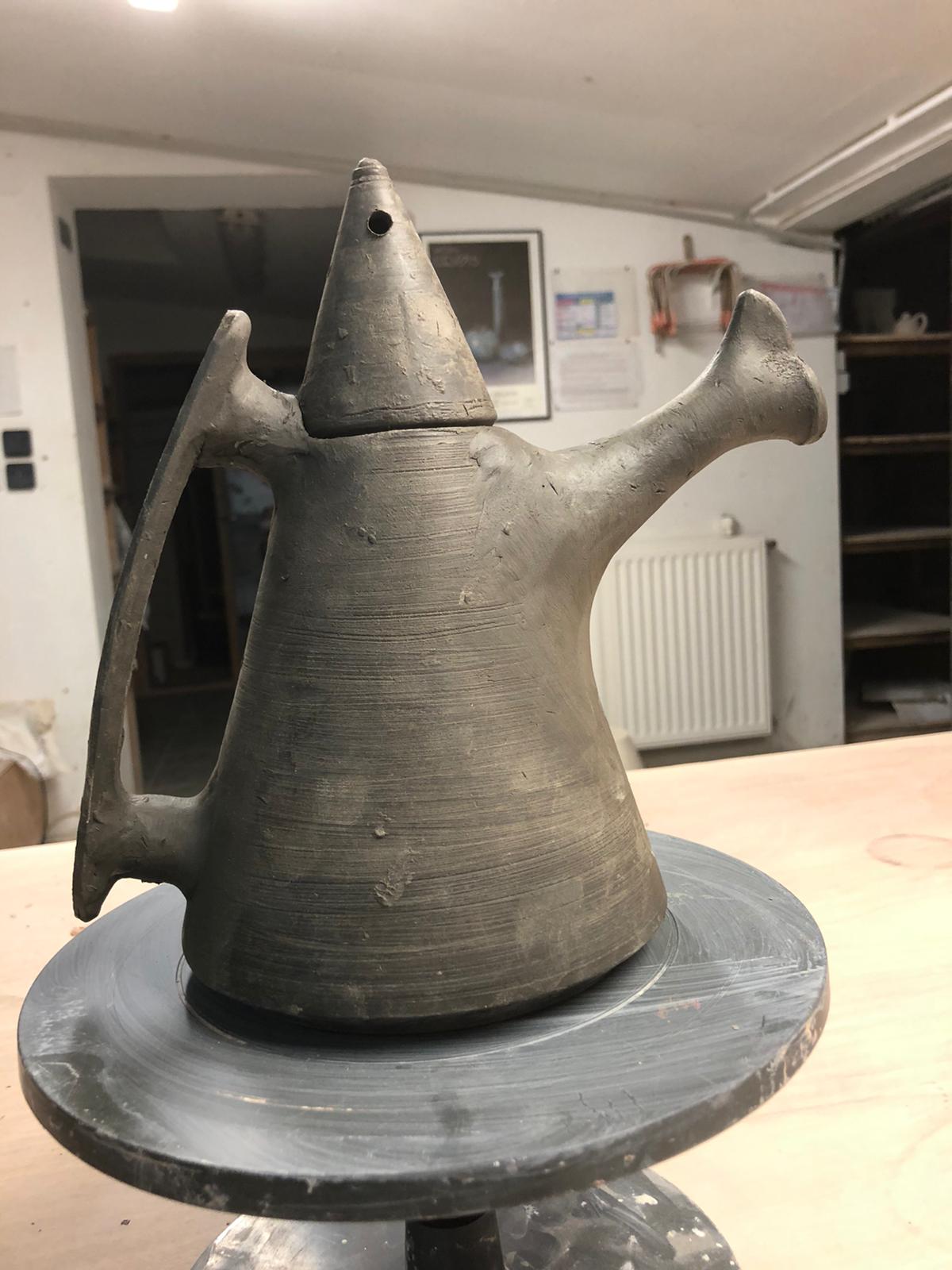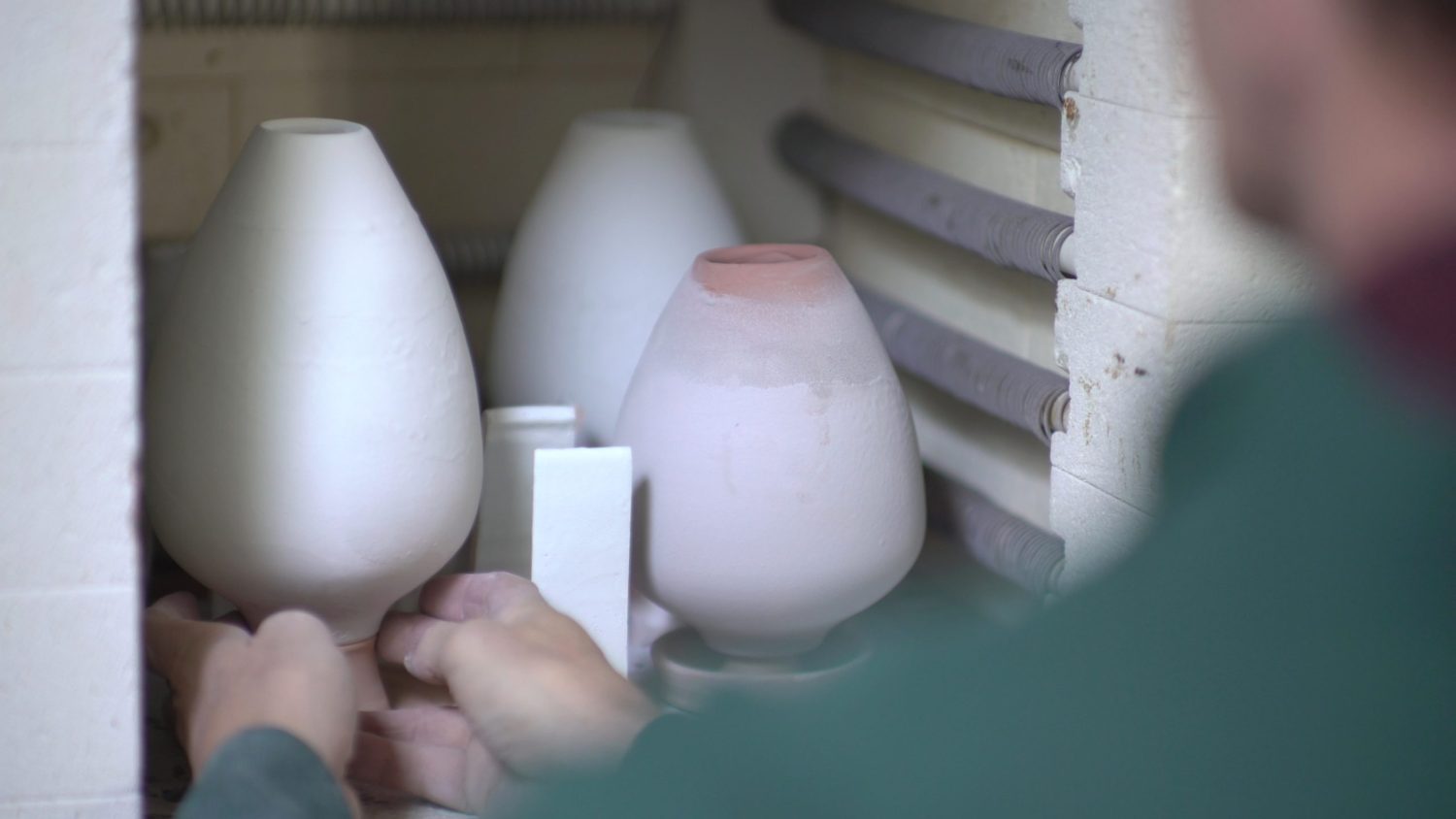Why should we practice repetition throwing or production series in pottery?
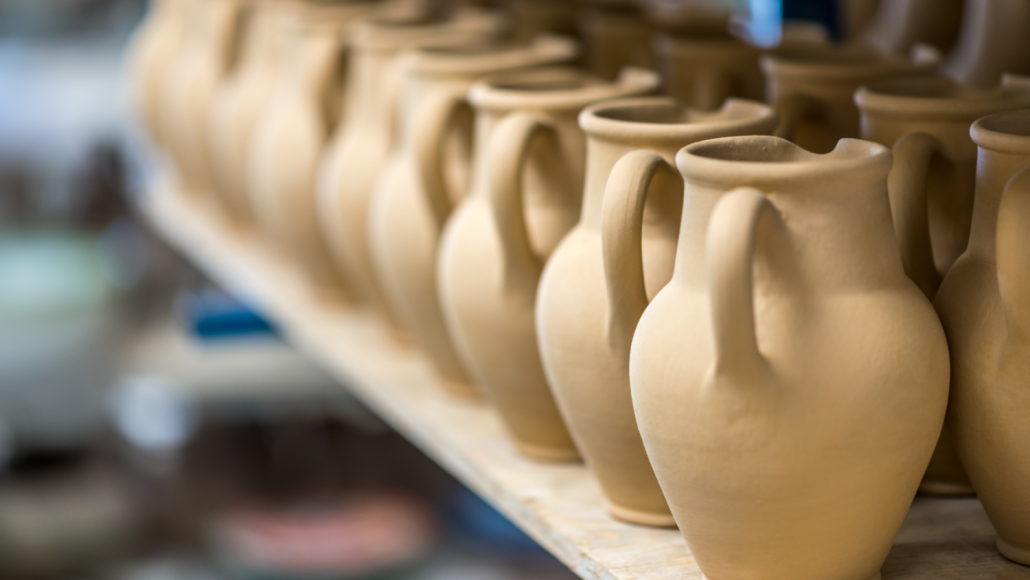
The importance of repetition throwing
From a series to a unique piece…
… from a unique piece to a series
Who has never imagined themselves as an inspired potter, creator of unique pieces of work? And who has never set up on the wheel without really knowing where to start?
It is not uncommon for these two conditions, contradictory as they are, to coexist in a single artist. Why? Because no artist, as great as he or she is, is great all the time.
This is why it is important to know how to produce a series of identical pots, a task that may seem simple and repetitive, but develops skills and inspires creativity.
You will be able to make beautiful unique pieces, reflecting the inner world you carry within you.
Mastering throwing
Learning to throw is achieved by this winning combination: centre, pull up the walls (straight, open or closed) and do it all over again . . . until the actions become natural and fluid.
Every potter remembers the happy moment when the ball of clay is centred and the walls emerge without wandering off-centre. With tenacity you will always manage it. But the most difficult thing is to get there the same way every time: here begins a long process of repetition through which this skill becomes ingrained, and cannot be forgotten. Soon enough your hands will work by themselves and something that seemed so hard at first will happen with ease.
The importance of repetition throwing
At this stage, the temptation is great only to make unique pieces, to take a different piece off the wheel each time, to vary shapes and sizes: bowls, vases, plates, dishes, salad bowls, pitchers, etc. Ideas flow. And why not embark on more demanding pieces . . . including the famous teapot?
In reality, learning to produce many pieces identical in shape and weight takes far longer than you might think, and it is important not to skip this step. When you finally have a shape you like, repeat it and consolidate your technique.
Successful repetition throwing
To succeed in repetition throwing, it is important to weigh the clay very precisely for each pot. Then, on the wheel, you can use a throwing gauge to delineate the height and width to be reached, and not to be exceeded.
A novice potter cannot accurately assess the thickness of the pieces he or she is making. The throwing gauge becomes a precious tool, as well as the potter’s needle to measure the depth of the bottom of a pot.
With time, and especially with the discipline of repetition, it is amazing how a potter manages to reproduce identical pieces, even without a throwing gauge, by touch and sight only. On the other hand, it will always be necessary to continue to weigh the clay with great precision.
Learning to turn and glaze
Using some of these numerous identical pots you have thrown will help you to learn to turn. Turning brings a beautiful finish to an object. It is a complicated operation at the beginning, so it is better to learn it on the pots that you will not regret losing.
The same goes for glazing. It is psychologically easier to risk your first glaze tests on these identical pieces. Glazing can bring many hiccups, and it’s so discouraging for glazing (and firing) to fail on a unique piece you spent a long time throwing! Paradoxically, a piece not perfectly thrown or turned can look beautiful if the glaze is successful.
From repetitive throwing to a unique piece
Experience in production throwing is the prerequisite for the successful realization of
more difficult pieces, which will be considered “more inspired”. Through the humble work of repetition, you will get to know how to work with your clay and new ideas will then emerge. Practising this skill helps inspire potters to invent new forms.
But the artist does not always have an earth-shattering idea, the one whose realisation brings peace and contentment. It is therefore essential for a potter to find satisfaction in making the same piece repeatedly, and to find pleasure in doing so.
It’s not an easy task: you only need to stroll through the supermarket shelves to see that the industry mass produces attractive pieces, at unbeatable prices.
. . . from a unique piece to a series
The overall challenge for the potter is to make a functional object. For example, a pitcher or jug should have a handle which is sufficiently wide and placed in a position that makes lifting and pouring easy, with a lip that allows water to flow easily without dripping. A bowl or a mug’s rim should not be too thick (or else it will be unpleasant to drink from), but not too thin either (which would make chipping more likely.) And the potter should carefully consider what a cup or mug is to be used for. Is it for an expresso? Or for a large cup of tea, or an Americano? . . . So when repetition throwing – which can be as satisfying as it is challenging – the potter must always take into account the potential end-user’s needs and wishes.
Finally, let’s talk about the next step: glazing and firing. Production throwing makes it possible to quickly fill a kiln and therefore to fire often, which is essential to progress, be it in learning how to fire or throw, turn or glaze. Glazing is a wonderful and interesting challenge: through the magic of the kiln, your work will not be identical from one piece to another (this is particularly true when we superimpose different glazes). Thus, through simple repetition throwing, the potter can test and develop something truly original.
This work is demanding, but it is crucial to acquire a solid technique and give the potter the freedom to be creative. A musician never stops practising scales and arpeggios; a footballer never stops training. Potters will always find repetition throwing a series of pots the most fundamental expression of their artistry, at its most beautiful and inspirational.

Resource centre
animated by Matthieu Liévois,
potter-ceramist for over 40 years and founder of the Creamik School
Find all the courses
Keywords
Don’t miss any more news from the Créamik school!





